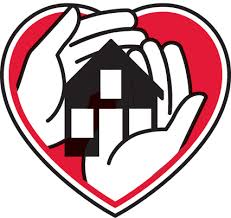 No understatement, these are very difficult times for nursing homes. First off, many residents have died, and news media organizations are now obsessed with counting and re-counting, totaling up the numbers (more than 10,000 as of today) and then counting some more. So many of the 1.5 million residents of nursing homes were already very frail people, needing help with 3 or more ADLs. 72% of residents are women, most are age 85+, and as noted, 'many also have only a small group of family and friends for support.' Yet there are people who should know better lined up to bash their performance at managing this virus: "If there was any type of senior-care facility that should have been most equipped to manage the COVID crisis, it should have been skilled nursing facilities,” said Brian Lee, a former Florida long-term care ombudsman who currently is a member of an advocacy group called Families for Better Care." Right.
No understatement, these are very difficult times for nursing homes. First off, many residents have died, and news media organizations are now obsessed with counting and re-counting, totaling up the numbers (more than 10,000 as of today) and then counting some more. So many of the 1.5 million residents of nursing homes were already very frail people, needing help with 3 or more ADLs. 72% of residents are women, most are age 85+, and as noted, 'many also have only a small group of family and friends for support.' Yet there are people who should know better lined up to bash their performance at managing this virus: "If there was any type of senior-care facility that should have been most equipped to manage the COVID crisis, it should have been skilled nursing facilities,” said Brian Lee, a former Florida long-term care ombudsman who currently is a member of an advocacy group called Families for Better Care." Right.
Closing the gate, now that the chickens have left. With all the publicity about terrible conditions in the nation’s nursing homes, states and the federal government are galvanized into some self-protective and resident-protective actions. In fact, the latest is an effort across multiple states to grant them immunity from Covid-19 civil lawsuits because of a 'shortage of PPE' – unlikely to have been stockpiled just-in-case prior to this wave of publicity. Meanwhile, a wave of nursing home ‘transparency’ directives emerges from CMS, the nursing home regulator. Most important? Identifying which nursing homes had Covid-19 cases. Add to that, state-by-state, the National Guard is being brought in to disinfect nursing homes or assist with Covid-19 testing.
But what is the standard of care and how is it measured? With such visibility, consider that none of these articles are examining how nursing homes are measured. Consider the business structure of nursing homes – 70% of them for-profit, many also under-staffed and under-supplied, and not just with PPE. Multiple of these owners also own the supplier companies that deliver goods and services that also contribute profit to the owners.
Measure – and we can see. At the same time, a recent survey underpins the staff shortages and problematic infection control procedures. Some nursing homes (including my experience) are well-run – it would be useful if the rating system revealed that. At the moment, CMS’ five star rating system has a now-updated annual inspection process to check off whether nursing homes meet the individual elements that make up the rating. This AHCA observation was that the revised Five Star system would cause a slip in ratings, which would lead to consumer confusion, etc., etc. None of that change nor subsequent noise about nursing homes reflects the current Covid-19 nursing home nightmare.
So where is tech-enabled transparency in all of this? There are numerous reasons why nursing homes help families who otherwise could not provide adequate care. Technology-based changes could help with the management, family visibility/oversight, and tracking of quality in between inspections. Take the current data sets about Covid-19 infections, add complaints and other items well-documented over time. Combine staffing information, aggregate information about health status of residents, and create predictive analytics about where future issues may emerge. That could help families assess and management do a better job. Add tablets for residents and support camera-enabled tech for family chats, and wearables to better monitor health status. Identify volunteers who would check in online with residents that lack families, even willing to come in (when that's feasible) to be proxy family council members.
from Tips For Aging In Place https://www.ageinplacetech.com/blog/nursing-home-transparency-needs-more-covid-19-case-counting
No comments:
Post a Comment
Note: Only a member of this blog may post a comment.